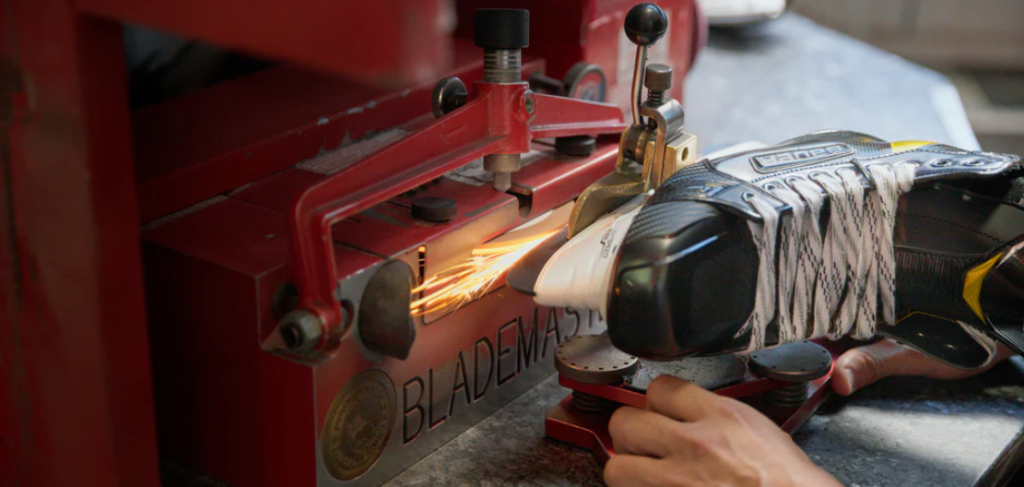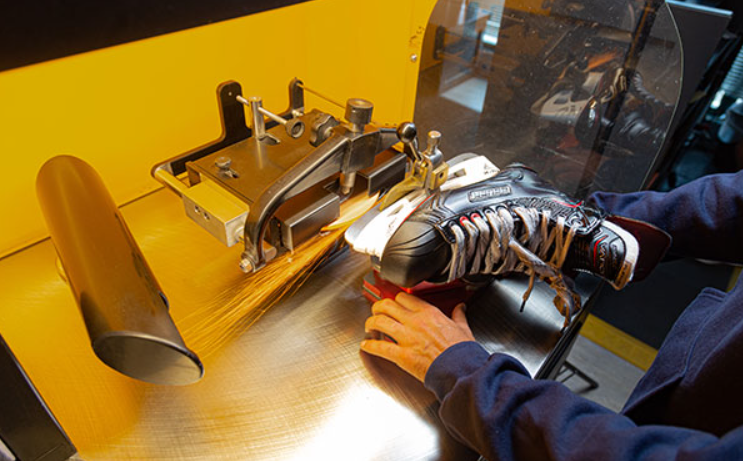HOLLOW RADIUS, EVEN EDGES & QUALITY FINISH WILL HELP YOUR FIELD HOCKEY GAME
In field hockey, skating is everything – and poor sharpening is sure to hurt your game. The Precision Balancecustom sharpening system is designed to give you consistent sharpening every time. This ensures that your skates are sharpened for your skill level and style of play to enhance your performance on the ice.
Skate sharpening is an art that takes time to master. Our skilled skate sharpeners have the knowledge and training to create a precise edge on your blade, giving you the performance you need from your skates, no matter what level you play at.

Below are explanations of some common terms that refer to how skates are sharpened:
CAVITY EXPLAINED
Skate blades are not flat. A hollow or “U” shape is ground into the blade to create a right and left edge. The deeper the hollow or U-shape, the sharper the skate appears. Below are typical sharpening dimensions in order from deepest to shallowest: 1/4, 3/8, 7/16, 1/2, 5/8.
A sharper skate will give you more bite, but less slip.
FLAT BOTTOM V
The FBV has a flat bottom and sides in a “V” shape, rather than a “U” shape. This shape allows the skate to have a better bite without sacrificing its ability to glide. Because the blade does not penetrate the ice as deeply, there is less chance of catching an edge, reducing the chances of falling during transitions for less experienced or less skilled skaters. There is also a reduction in torsional forces acting on the knees, which means less wear and tear on the joints.
CONTOURING
Also referred to as “Rockering,” contouring is the actual shaping of the blade. This allows the blade to vary in length and contact with the ice. The greater the contact with the ice, the greater the glide. Less contact with the ice gives a sharper turn (smaller radius). The goal is to create a balance between glide and turning radius, tailored to the skater’s individual needs. Examples of common radius measurements, from the largest slip (or contact) to the smallest (or sharpest turning radius) are 13′, 11′, 9′, 7′.
CROSS-GRINDING
This is a process that brings the blade to a flat reference point. It is a technique that is used to remove damage to the blade such as nicks or weak levels.
Don’t settle for just any sharpening! Sharpen your skates at one of our local field hockey stores and experience the best skate sharpening service in Canada to elevate your game.
